Anzali Lagoon: A Nature Lover’s Paradise
Anzali Lagoon, a haven for migratory birds and lush water lilies, enchants visitors with its tranquil waters and vibrant ecosystem.
Iran is a land of diverse beauty, with each province showcasing its unique natural heritage. Among its many gems is Gilan, a region known for its breathtaking landscapes.
One of the most iconic attractions in Gilan is the Anzali Lagoon, a coastal wetland connected to the Caspian Sea. The lagoon is home to a rich variety of plant and animal life, with the lotus flowers and water lilies standing out as signature features. The wetland's ecosystem creates a paradise that changes with the seasons, offering visitors a tranquil escape into nature’s beauty.
The Anzali Lagoon, also known as "Anzali Sel" in the local Gilan dialect, is one of the most important and beautiful freshwater wetlands in Iran, dating back 15,000 years.
Whether you’re into boating, fishing, or birdwatching, this stunning destination offers an unforgettable experience. In this blog, we’ll cover everything you need to know about the Anzali Wetland, including its history, wildlife, and top activities to enjoy.
About Anzali Lagoon
Anzali Lagoon, an internationally recognized wetland, was added to the Ramsar Convention's list of Wetlands of International Importance in 1975, making it one of Iran's first internationally registered wetlands.
The registered area includes the entire Anzali Lagoon, Siyah Kashim region, the Selkeh protected area, and several other water reservoirs, each of which has distinct physical, chemical, and geographic characteristics, making them diverse ecosystems.
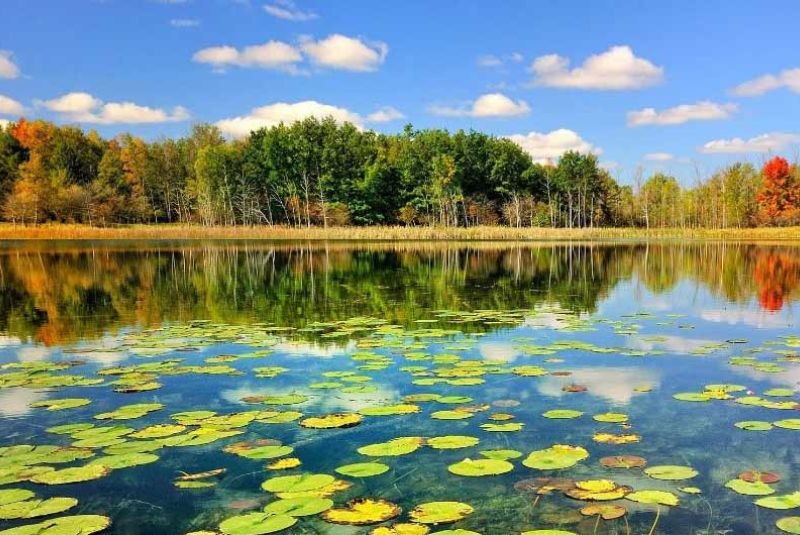
Due to its unique geographic location, Anzali Lagoon is unparalleled in Iran in terms of high humidity and water levels. It serves as a habitat for water lilies, a breeding ground for aquatic species, and a sanctuary for both native and migratory birds. One of its most important functions is purifying river water. This coastal wetland is connected to the Caspian Sea via a shipping canal.
The lagoon boasts remarkable biodiversity, with over 100 bird species and 50 aquatic species. Its size varies with the seasons, expanding to 120 square kilometers during the rainy season and shrinking to about 80 square kilometers in dry months. The surrounding watershed spans approximately 374,000 hectares, including meadows, agricultural lands, reservoirs, and more.
Anzali Lagoon is also connected to 11 major rivers and 30 smaller ones, which bring water to the lagoon, ultimately draining into the Caspian Sea through the shipping canal.
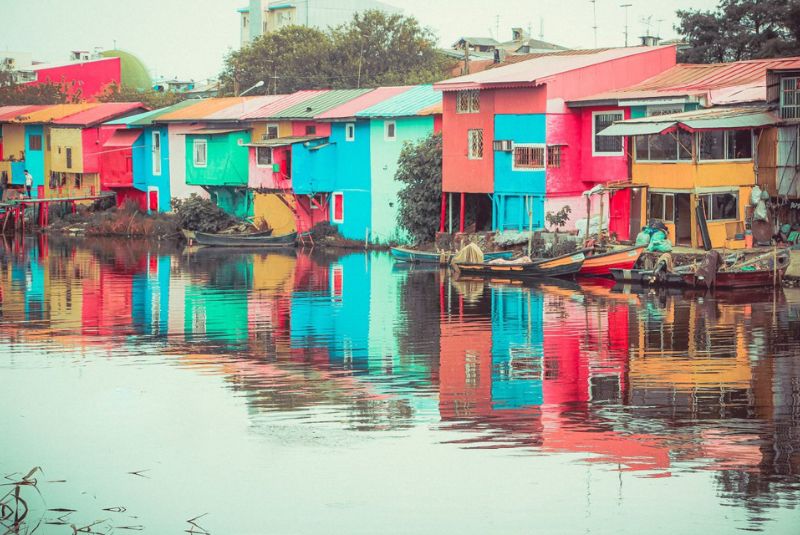
The depth of the Anzali wetland varies with season, climate, and fluctuations in the water level of the Caspian Sea due to tides. The maximum water depth of the wetland reaches 5.2 meters in the spring and in the western parts of the wetland, but this number is much lower in the low rainfall seasons of the year.
Economically, the lagoon's sediments are highly valuable, potentially used as chemical fertilizers, construction materials, or for the discovery of rare elements like titanium, which is crucial in aerospace technology.
Since 1993, the lagoon has been under protection due to threats like fluctuating Caspian Sea water levels, sediment accumulation, and pollution, requiring ongoing conservation efforts.
Why is it Called Anzali Lagoon?
The name "Anzali" is believed to have originated from the word "Hamzali" in the Gilaki language, which means "the friction and proximity of water and land." This could refer to the way the lagoon merges with the surrounding land.
Additionally, similar words such as "Anzalius" and "Anzalia" in Greek, meaning "swamp," may also be related to the name. With a history of over 15,000 years, it is likely that this naming dates back to ancient times, possibly inspired by the lagoon itself.
The Formation of Anzali Lagoon
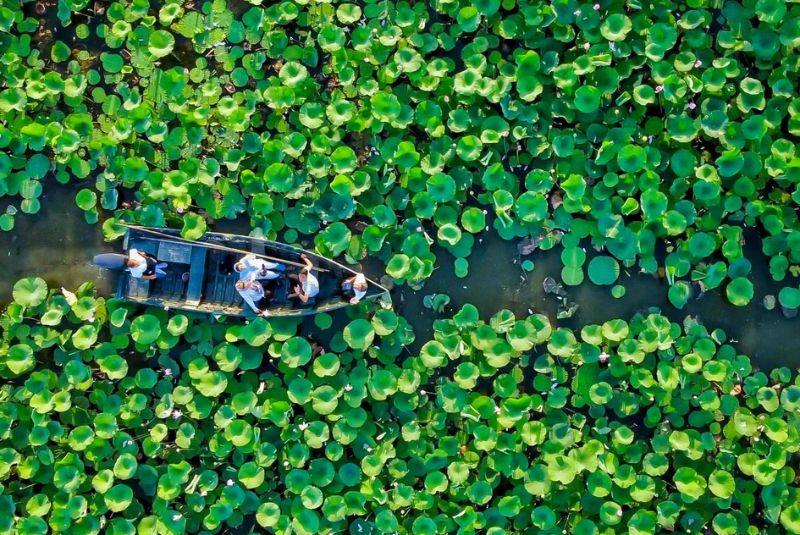
Anzali Lagoon's formation dates back approximately 70,000 to 100,000 years, based on research and studies. The lagoon was created by sedimentation of marl (fine sand) deposits, approximately 450 meters thick, along the coastal edge. These ancient sediments, also known as "Old Caspian sediments," likely continued through the glacial period.
The glacial period refers to a time when a region was entirely covered by glaciers. During this time, the present-day city of Bandar Anzali and its lagoon did not exist in their current form. Erosion from surrounding mountains over thousands of years led to the creation of sunken basins, where old sediments accumulated.
Around 15,000 years ago, new marine sediments were deposited on top of these older layers, marking a shift from the "Old Caspian" to the "New Caspian" sediments.
As the sea level gradually receded, the waterlogged land in the coastal plains emerged, forming a long, narrow strip of land. This process led to the formation of the Anzali Lagoon, as two narrow strips of land, 270 meters to 9 kilometers wide, separated by water.
The western landmass became known as the Bandar Anzali Peninsula, which extends to the village of Korpuchal. The lagoon now consists of four sections: the eastern part, the western part (Abkenar), the central section, and the Selkeh and Siyah Kashim areas.
| Read more: Iran’s Top 10 Seas and Lakes to Explore
Flora and Fauna of Anzali Lagoon
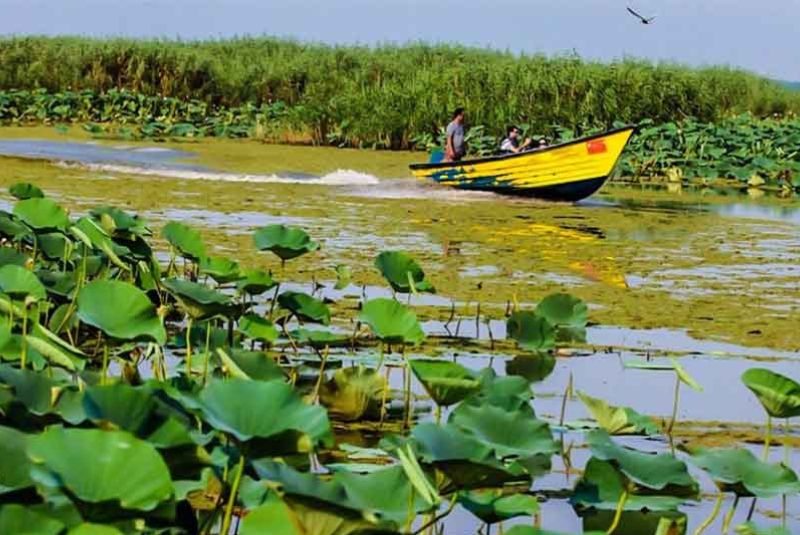
Anzali Lagoon is not only significant due to its historical value but also because of its rich biodiversity. The diverse plant life and abundant wildlife make it a crucial ecological habitat, recognized internationally for its importance.
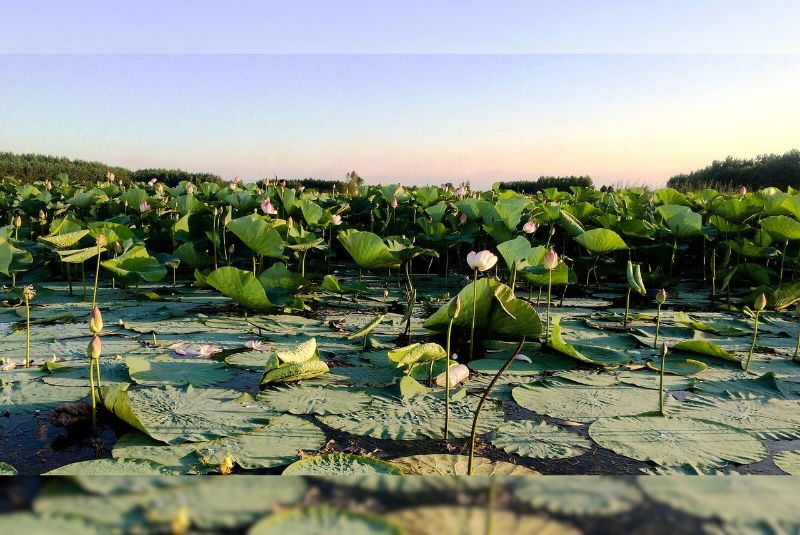
The plant life in the lagoon includes a variety of species such as marginal, floating, submerged, and terrestrial plants. These plants support a wide array of wildlife, contributing to the ecosystem's health and sustainability.
Marginal Plants: These plants grow along the edges of the lagoon. Their roots are submerged, with most of the stem in the water, but their leaves and flowers grow above the surface. Reeds, water mint, and knotweed are examples of marginal plants found in the lagoon.
Floating Plants: Species like water lilies, water mint, and frog's grass float on the water's surface, with their roots submerged beneath.
Submerged Plants: These plants are entirely or partially underwater. Species such as Myriophyllum, water chestnut, and thousand-leafed grass thrive in the lagoon's aquatic environment.
Surrounding Plants: The area around the lagoon is rich with trees and shrubs like nightshade, willows, and marsh plants, benefiting from the fertile and moist soil conditions.
Wildlife of Anzali Lagoon
Anzali Lagoon is a valuable habitat for various species, including birds, aquatic animals, mammals, and other wildlife, making its conservation vital. Here’s an overview of the diverse fauna inhabiting the lagoon.
Birds of Anzali Lagoon
The Caspian Sea, located along the migratory route of many bird species, is a key stop for migratory waterfowl. Each year, over 10-12 million birds, such as ducks, geese, swans, and other waterfowl, pass through the lagoon, spending one to three months in its wetlands.
The diversity of plant life attracts migratory birds, making the lagoon an essential wintering and breeding site. Some of the notable species include the pelican, white-tailed eagle, and the small white-fronted goose.

Aquatic Life
Anzali Lagoon is home to over 50 fish species and serves as the primary breeding ground for sturgeon and other Caspian fish. The lagoon hosts a variety of species such as carp, sturgeon, and the renowned Caspian shrimp, which is considered one of the world’s most delicious. Unfortunately, pollution has threatened many of these aquatic species, with many facing the risk of extinction.
Mammals
The lagoon’s mammalian species include otters, wild boars, hedgehogs, and Caspian seals. However, these populations are declining due to habitat loss and hunting pressures.
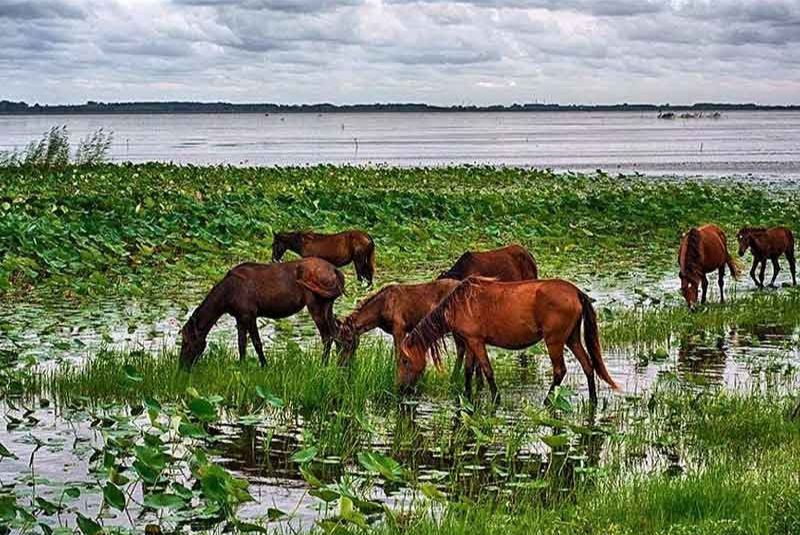
Other Wildlife
Anzali Lagoon also provides a home for various reptiles, amphibians, and rodents. Species such as the European pond turtle, the Iranian long-legged frog, and the black rat find refuge in this unique environment.
| Read more: Iran's Wildlife - A Nature Lover's Guide + Pics
Things to See and Do at Anzali Lagoon
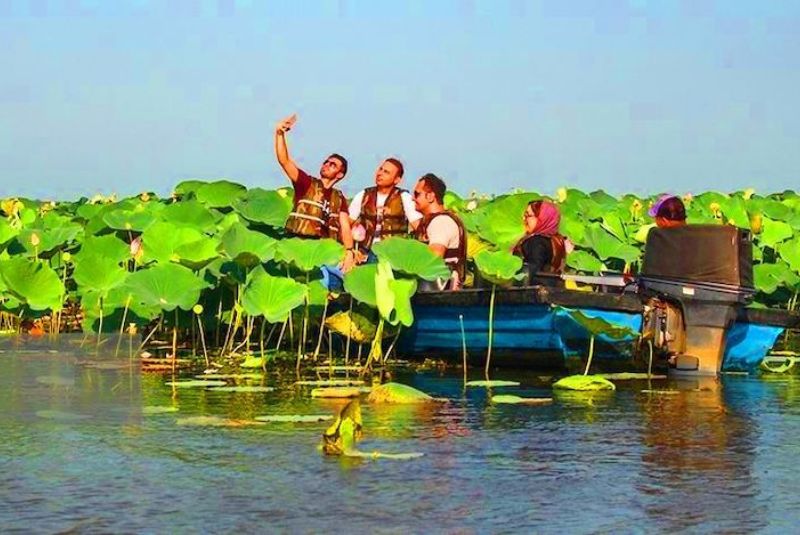
Anzali Lagoon, with its picturesque views and numerous recreational activities, offers unforgettable moments for visitors. Whether you are an adventurer or someone looking for relaxation, here are some highlights to enjoy during your visit:
Boating and Watching Water Lilies
If you have flexibility in choosing when to visit, consider coming between late June and late summer. During this time, the lagoon is adorned with the beautiful water lilies, which blossom and paint the lagoon with vibrant green and floral colors.
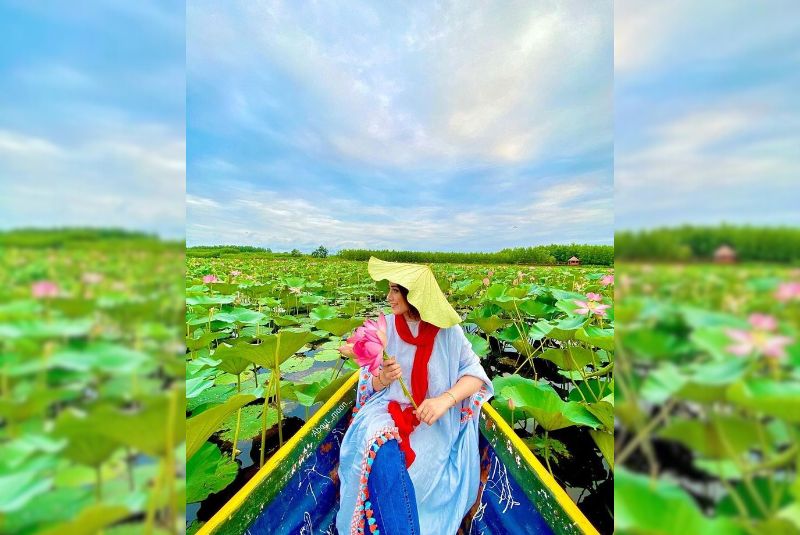
The water lily, with its large round and heart-shaped leaves and thick pink petals, is a sight to behold. These floating plants, whose roots are submerged while the leaves and flowers float above, add a magical touch to the lagoon’s appearance.
You can rent a boat in different parts of Anzali Port and explore the waters, uncovering its natural beauty. The lagoon offers excellent opportunities for photography, creating lasting memories with the serene landscape.
Birdwatching
Anzali Lagoon is a haven for migratory birds, with many species coming from northern neighboring countries. This makes it one of the best places for birdwatching. You can spend hours observing the birds in their natural habitat, capturing their behavior and flight.
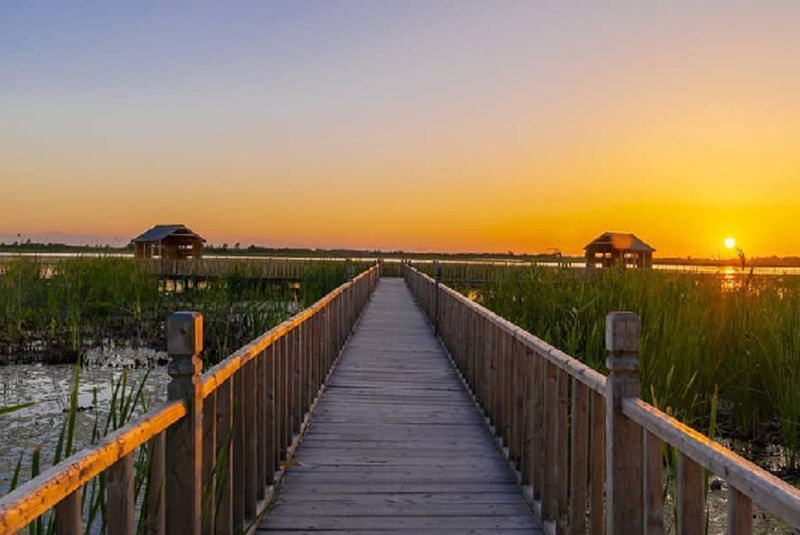
A birdwatching station has been recently established at the Selkeh Wildlife Refuge, which allows you to watch these majestic creatures. Although the station is still being equipped, visitors are encouraged to bring binoculars or cameras for a closer view.
Kayaking
Once used by Eskimos in the northern seas, kayaking has now become a popular recreational activity. At Anzali Lagoon, you can kayak along the waters, experiencing both excitement and tranquility. It’s a great way to explore the area while enjoying the outdoors and engaging in a physical activity at the same time.
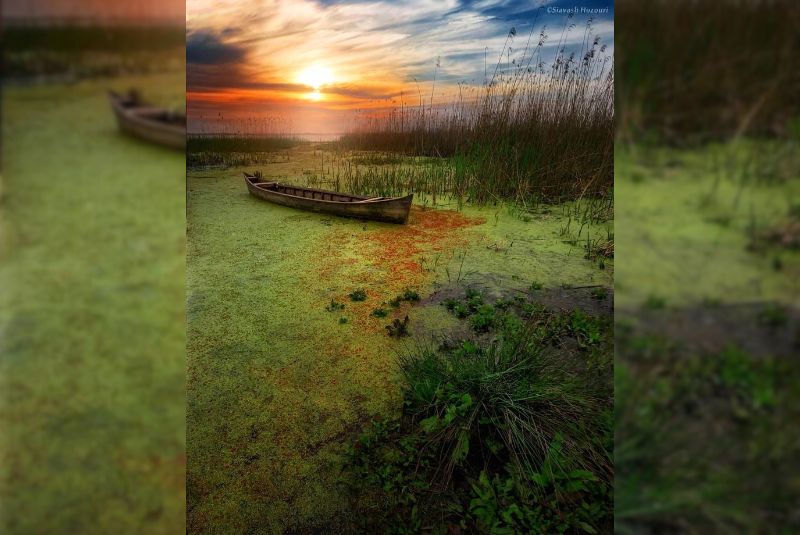
Fishing
Fishing is a popular pastime at Anzali Lagoon and its surrounding rivers. In the peaceful environment of the lagoon, you can fish in silence and connect with nature.
However, you will need to bring your own fishing equipment as rentals are not available. Make sure to fish during the appropriate season to avoid disrupting the local ecosystem.

Selkeh Wildlife Refuge
Apart from boating and other activities, the Selkeh Wildlife Refuge is a must-see. Located on the southern part of the lagoon in the Somesara County, Selkeh spans 360 hectares and attracts numerous migratory birds every year.
This site hosts species like the Whooper Swan, Little Grebe, and more. The area is also home to lush plant life, such as reeds and water lilies, contributing to its biodiversity.
Siah Kishim Protected Area
Located to the southwest of Anzali Lagoon, Siah Kishim is a protected area that spans 4,114 hectares. It is an important breeding ground for species like the Gray Heron and many migratory birds. Siah Kishim also boasts a variety of plant life, such as reeds and the medicinal herb Water Mint. The area is ideal for birdwatching and nature walks.
Serkhan Kel Wildlife Refuge
Located west of the Selkeh Refuge, Serkhan Kel offers a unique experience as it is home to both native and migratory species, including ducks, swans, and waders. It is also known for its aquatic plants and species such as the exotic water lily and lush reed beds. The serene beauty of this region is perfect for those seeking a quiet retreat in nature.
Islands of Anzali Lagoon
Anzali Lagoon is dotted with several islands, each offering unique attractions. The larger and smaller Gholam Godeh islands are popular for anchoring ships, while the Middle Peshteh and Akbarabad islands provide picturesque views and opportunities for exploration. The islands are home to various plants and wildlife, making them perfect for eco-tourism and nature lovers.
Best Time to Visit Anzali Lagoon
The best time to visit Anzali Lagoon depends on your preferences for weather. If you enjoy warm and humid climates, or if you prefer milder seasons, there’s a perfect time for you.
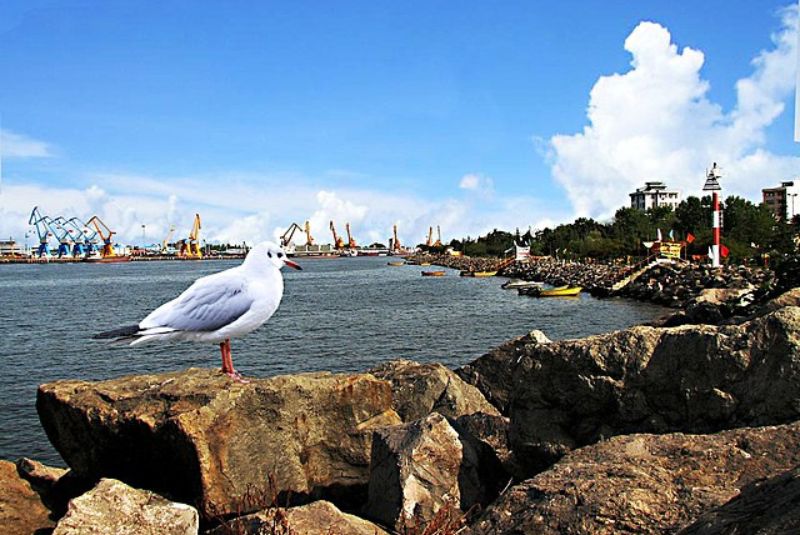
In spring, the weather is mild, and it’s a great time to spot migratory birds, making it ideal for birdwatching enthusiasts. Late June to the end of summer is perfect for seeing water lilies and lotus flowers, which bloom and create a breathtaking view across the lagoon.
Winter also offers a mild climate, and although the water lilies are not in bloom, the permanent vegetation and the migratory birds create a unique atmosphere worth experiencing. Keep in mind that during holidays and Nowruz, the lagoon attracts many visitors, leading to higher accommodation costs.
Anzali Lagoon Location
Anzali Lagoon is located in Bandar Anzali, the largest port city in Iran, situated on the southern shores of the Caspian Sea. This city is also known as the rainiest city in Iran.
Bandar Anzali, in the Gilan province, is a popular travel destination in northern Iran, attracting both local and international tourists each year with its stunning natural landscapes and unique attractions.
The lagoon lies southwest of Bandar Anzali, approximately a 40-minute drive from Rasht, and is bordered by several regions, including Soume'eh Sara to the south, Pir Bazar to the east, and Kappourchal and Abkenar to the west.
How to Access Anzali Lagoon
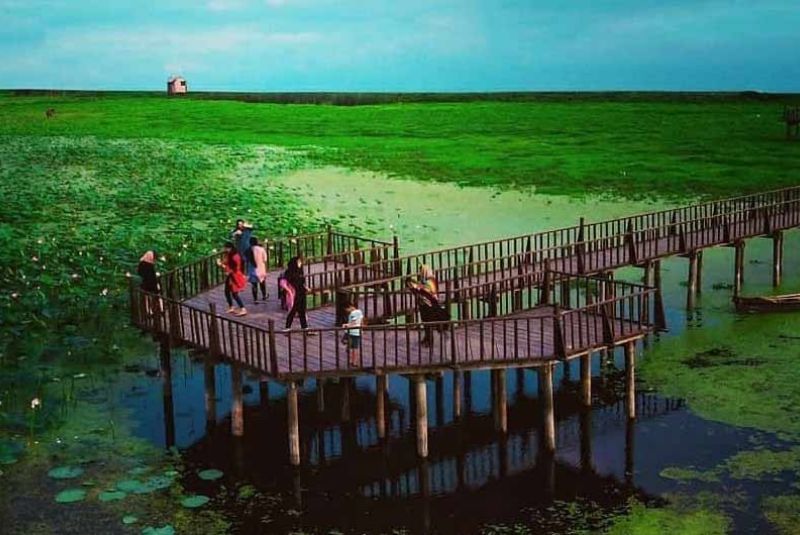
Anzali Lagoon is located on the southwest coast of the Caspian Sea. To reach it, drive via the Rasht-Anzali or Rezvanshahr-Anzali roads to the city of Bandar Anzali.
Once there, you can find boats that offer tours of the lagoon. One popular place to rent a boat is the "Nizar Cooperative," located at Takavaran Street, opposite the Falah Gas Station, near the aerial bridge in Anzali.
Accommodation Options at Anzali Lagoon
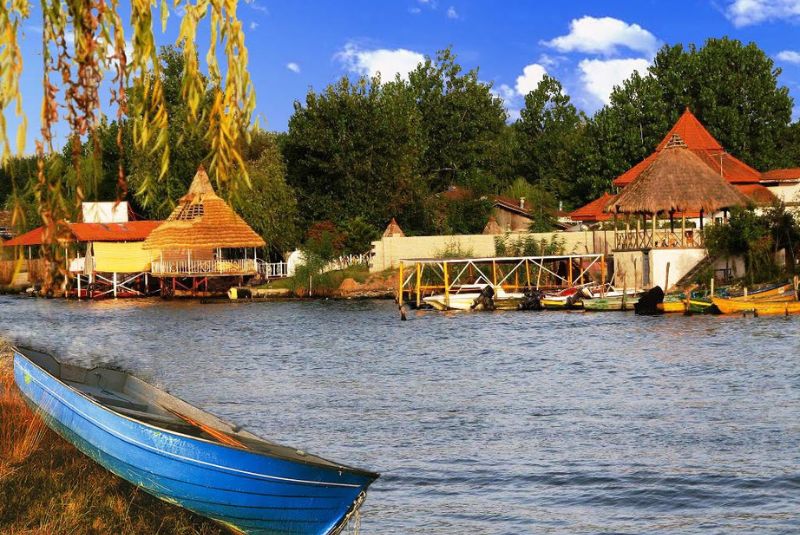
Anzali Lagoon offers various accommodation options for an enjoyable stay. You can camp by the lagoon, stay in eco-lodges, or choose from several hotels.
Camping around Anzali Lagoon
For camping, you’ll need appropriate gear, including a tent, season-appropriate sleeping bag, sufficient clothing, and equipment for cooking, fire-making, and rain protection. Proper preparation is essential for a comfortable and safe camping experience.
Eco-lodges and Hotels
There are several eco-lodges and hotels around the lagoon to choose from:
- Abkenar Hotel: The closest hotel to the lagoon, only a 5-minute walk away.
- Amiran Apartment Hotel: A budget-friendly option 30 minutes from the lagoon.
- Sefid Kenar Hotel: A 4-star hotel with excellent amenities, 30 minutes from the lagoon.
- Pour Rajab Suite: A friendly, local food-serving accommodation located 40 minutes away from the lagoon.
Restaurants at Anzali Lagoon
Anzali Lagoon offers several great dining options where visitors can enjoy local and seafood dishes.
- Niloufar Abi Restaurant: A large, beautiful wooden restaurant located in the middle of the lagoon, on Estadium Street. It's an ideal spot for tasting local and seafood dishes and offers fantastic photography opportunities of the lagoon.
- Negin Mardab Restaurant: Another wonderful dining spot accessible by boat or car. Located on Takavaran Street, it serves a variety of delicious seafood, making it a memorable experience for visitors.
Bottom Line
Anzali Lagoon is one of Iran's most beautiful and ecologically significant wetlands. Located in Gilan province along the Caspian Sea, it is home to diverse wildlife, including migratory birds and aquatic species.
The lagoon's rich biodiversity, including water lilies and over 100 bird species, makes it a paradise for nature lovers. Visitors can enjoy activities like boating, birdwatching, and fishing. The lagoon's scenic beauty promises an unforgettable experience.
Share your story!
Comment below and let us know about your Experience.
Your story inspires others!


Comment
Leave a Comment